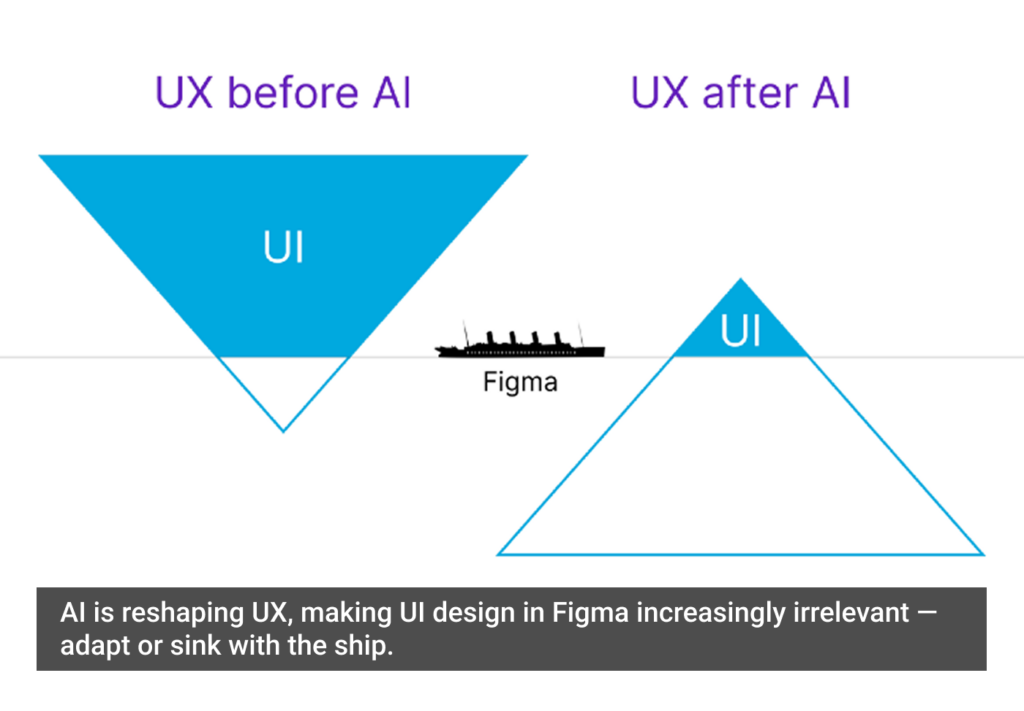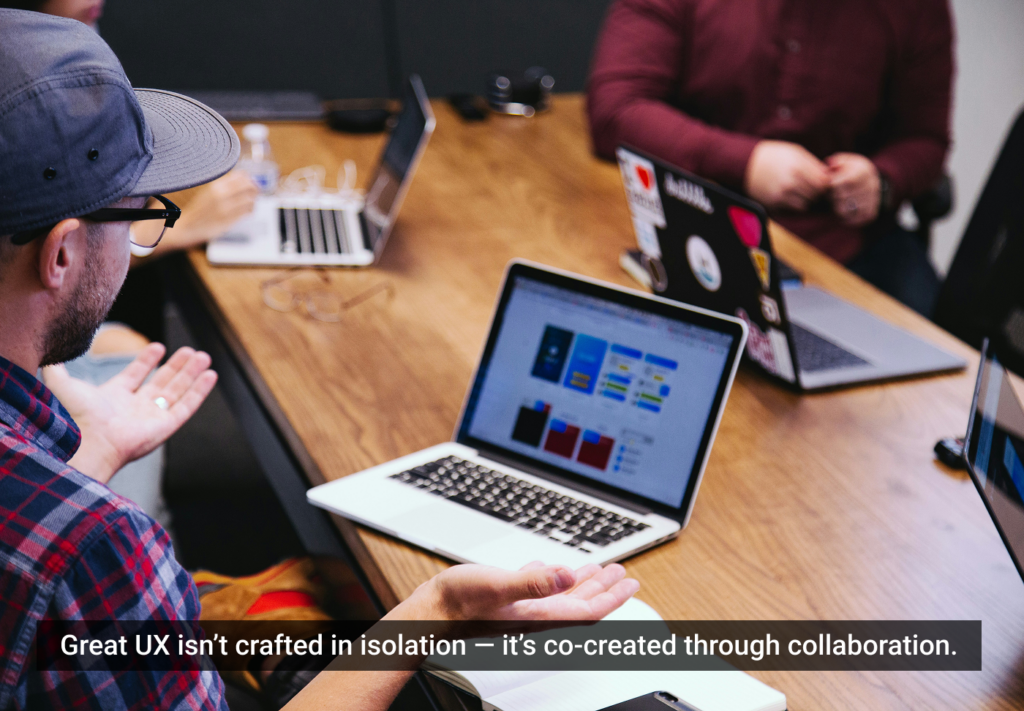A few weeks ago, I needed my post-lunch coffee. I made my way over to our fancy La Marzocco espresso machine and ran into my colleague, Cass, a data scientist and engineer at MailChimp.
While Cass and I have been in the same meetings before, we seldom cross paths. We’re on different teams, housed on different floors of the same building.
This was good timing: I was tasked with rethinking a user pathway through our application, and Cass could provide some influential data.
Running into him saved me from having to write a detailed email, or—worse—forget his input entirely.
Our interaction was not a happy accident so much as a desired outcome. The espresso machine is a magnet, parlaying an ingrained habit into a bit of social engineering. My chat with Cass was just the desired effect MailChimp had in mind when it set up an espresso bar: colleagues congregate for the coffee, but end up communicating and collaborating. For a design-centric culture, communication is crucial.
Company origin stories typically follow a linear path: a small team pulls together to create something successful, hires additional employees, and eventually breaks into departments. As these departments form, communication paradoxically becomes both harder and more important. This is anathema to the informed decision-making required for successful design projects.
Smart companies design hacks to open communications across silos, across departments, across org charts. Steve Jobs famously argued for a single, centralized set of restrooms at Pixar’s headquarters. He knew that every employee would visit the restroom eventually, and so where better to get different team members to collide? While he didn’t get his wish, he did settle for an oversized atrium that serves as a hub. As director Brad Bird (Ratatouille, The Incredibles) told Wired magazine, “The atrium initially might seem like a waste of space … But Steve realized that when people run into each other, when they make eye contact, things happen.”
Things happen—things that aren’t planned, that aren’t scheduled months in advance. These accidental-but-engineered meetups hold tremendous value: the best-case scenario is that vital information flows across teams. At the very least, these interactions sow the seeds for an eventual collaboration.
While not quite on the scale of what Steve Jobs envisioned, Kara DeFrias and members of Project MyUSA (formerly MyGov), part of the first class of White House Presidential Innovation Fellows, were given a “blank slate” with their office space. Believing that “ideas can come from anyone,” they designed their space accordingly: whiteboard walls near collaboration tables prompted the Fellows to interact and record their ideas. Additional details—like grass carpeting, yoga balls, and ample spaces and places to sit—introduced a bit of fun to the office environment. As she explains, “Coding becomes delightful coding.”
A fun environment is nothing new to DeFrias, a Senior UX Writer at TurboTax. Both there and at the Fellowship, the bathrooms are just far enough from the workspace to make the trip a chore. In both cases, to pivot the bathroom trek into something more delightful (and to shorten the trip), she brought in a scooter. The scooter serves two purposes: it injects a bit of fun into the work environment, and it makes for an easy icebreaker when rolling past other teams.
Sometimes coding itself is a recipe for cross-pollination. At Squarespace, designer Linda Eliasen and her colleagues use hack days and hack weeks as an opportunity to collaborate with colleagues from other departments. At a growing company of 135 workers, she says it’s an easy way to “get to know each other way better than if we were just hanging around the water cooler.” And the hackathons have both social as well as tangible benefits: in addition to the collaboration, the resulting software proves both useful and educational. One such project allowed the team to learn about the most-Tweeted Squarespace websites.
Adobe’s Garage Week is similar to Squarespace’s hackathons, with similar results. There, according to Senior Experience Designer Amy Durocher, pairing developers with a UX person has resulted in both great ideas and potential patents. Less techie but equally collaborative, Adobe sponsors an annual summer whiffle ball tournament. Says Durocher, “It breaks down the ‘management chain’—everyone is a player, [which] is awesome for camaraderie …”
Adobe also opts for simplicity in promoting collaboration: food and drink. Durocher explains that most of the 550 employees eat together at the Seattle office, and “that is where a majority of the togetherness happens.” More, every Friday afternoon the company hosts a “Beer Bash” to grease the social wheels.
At Redbox, collaboration is a bit more organic. Unlike the organized activities of Adobe, Redbox relies on their office space (and free snacks and beverages) to promote communication. Andy Schultz, Manager of UX Research, describes large counters in their break rooms as a place “where people naturally stop and catch-up with each other. The space also encourages employees to pause and catch their breath for a few minutes before running off to another meeting.”
For Brad Haynes, UX Creative Director at SalesForce, collaboration is integral to a healthy process. He experiments with small teams, immersing them in products and features for sprints. As he sees it, “Small teams breed healthy relationships. The trust that is developed there goes a long way in helping to bridge the gaps between the different roles.”
This philosophy extends to Nike’s Center of Design Excellence, where “collaboration is inherently woven into our cultural way of life and an expected behavior,” according to VP of Design Operations Angela Snow. She explains:
We have a Design Community Council that puts on events and maintains a constant brainstorm about how to keep Nike Design alive as a creative family. We have a cross-discipline Trend Council that comes together each week to discuss currents within the culture. We fund a studio at a local art college and make it available to our entire design community. We do gallery shows in Portland. We do skills workshops, such as a daylong session on Narrative that everyone on the team will go through. They key is cross-pollination—getting people out of their silos on a regular basis, so those moments don’t feel like a quarterly update (which we also do) or forced interaction. We like each other, we’re curious about each other—but we’re too big for the contact and collaboration to happen quite as organically as it used to, so we’ve built a sort of parallel universe where we get to hang out together.
For Nike, their parallel universe is above and beyond—yet crucial to—their day-to-day jobs. By promoting so many alternative means of cross-team pollination, Nike ensures that collaboration is inevitable.
Based on the examples provided here, collaboration hacks tend to fall into roughly three categories:
Special Events: Squarespace’s hack days and Adobe’s whiffle ball tourney break workers out of routine habits.
Social Events: Adobe’s beer bashes and Nike’s gallery shows and art studio blur the lines between work and social activities.
Designed Environment: The White House Innovation Fellows and Redbox take it back to the basics by creating environments where communication is promoted.
Whether the result of planning (whiffle ball) or a byproduct of ritual (eating and drinking), collaboration is essential for design teams. When the different arms of an organization share their respective expertise, it allows the organization to behave smarter as a whole.
Image of espresso machine courtesy Shutterstock







